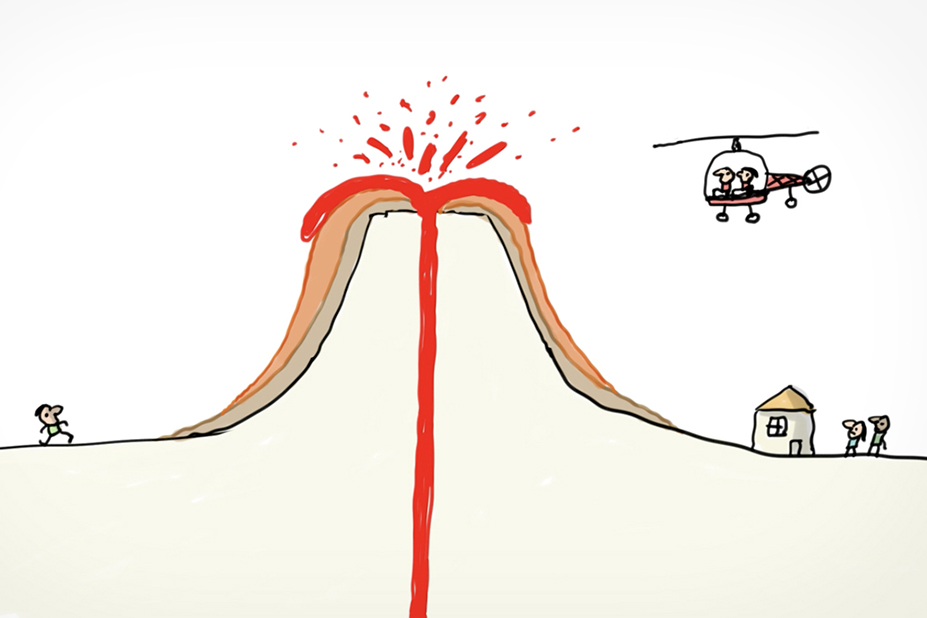Some appeared hundreds of thousands of years ago, while others just appeared recently.
But each time, it’s the same phenomenon: magma, a mixture of molten rock and hot gas from the depths of the earth, escapes through a crack in the Earth’s crust.
On contact with the air, magma cools down and hardens. With each eruption, the rock piles up. A volcano is born!
But why does the Earth’s crust crack?
Because tectonic plates move.
That’s right, the continents and oceans sit on huge plates which slot together like a jigsaw puzzle.
These tectonic plates are always moving and sliding over and under each other, like on a conveyor belt.
Most volcanoes are found at the junction of two plates.





 Retour
Retour